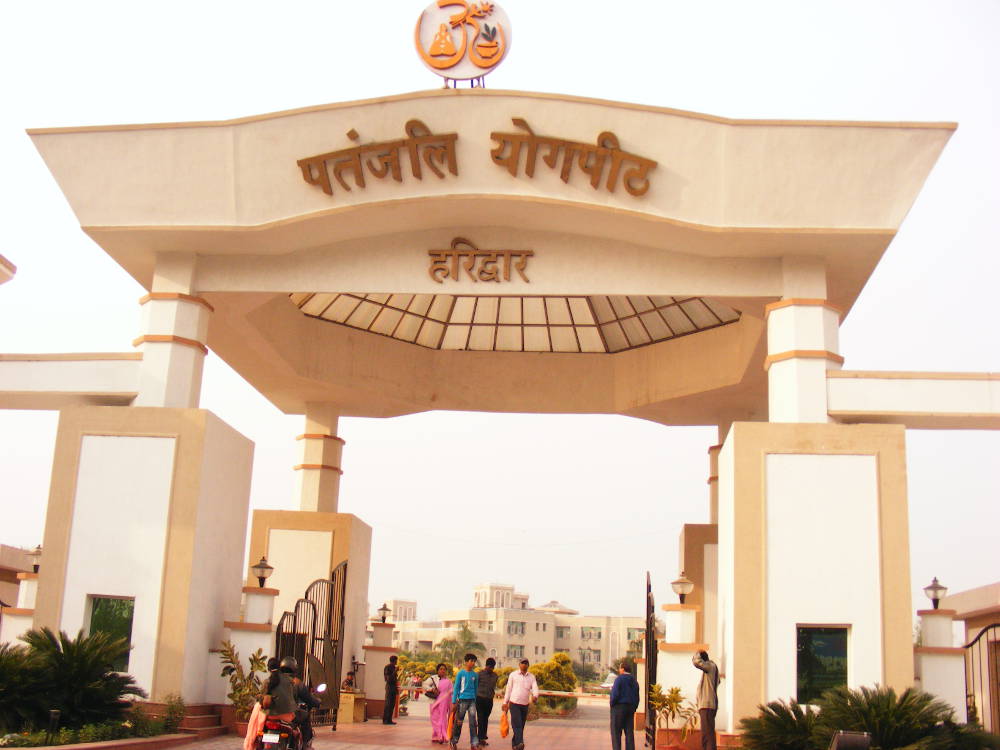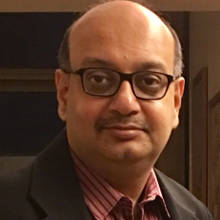[Photograph by Alok Prasad under Creative Commons]
Of late, Devendra Chawla, Future Group’s president, says he’s been besieged with meeting requests from a clutch of chief executives of fast-moving consumer goods (FMCG) companies. And there’s only one thing they all seem to want to talk about: the phenomenon called Patanjali. Yes, it is a phenomenon. The numbers tell only half the story. Last year, Hindustan Unilever grew its $4.5 billion top line by 5%. Patanjali Ayurved, on the other hand, added almost the same quantum of revenue and in the process, is likely to more than double its revenues to Rs 5,000 crore by the end of March. It is clearly the fastest growing FMCG firm in the country, with the widest product portfolio. The Future Group, which announced its tie-up to stock Patanjali’s wide range of products last year, is furiously reworking its sales forecasts because the products are simply flying off the shelves. In less than two years, Future Group says it expects to sell nearly Rs 1,000 crore of Patanjali products. That’s the kind of traction that most former FMCG veterans like Chawla have not quite seen in their entire career.
Then there’s the anecdotal stuff. Like the dilemma that a director in a leading FMCG multinational finds himself in. His aged parents have apparently been haranguing him to jettison the toothpaste brand made by his own company and switch to Patanjali. The battle, he says, isn’t just in the marketplace, but within his own family!
For the FMCG companies though, the disruption that Patanjali has wrought is for real. Because it challenges many of the long-held assumptions in the classical FMCG world. Patanjali doesn’t employ any fancy managers with MBA degrees. Instead of selling to the retail trade through distributors, it has its own branded outlets around the country. (It signed up only recently to sell through the Future Group’s network.)
Its production units are relatively modest. The savings in distribution margins and the low overheads straightaway translate into a 20-25% cost advantage. That gives it the leverage to price its products at least 15-30% cheaper than other branded competition. However, for its growing base of users, it isn’t just about a cheaper price. They genuinely believe in the goodness of Ayurveda and the natural, chemical-free products. Patanjali spends only a tiny fraction of its revenues on mass media advertising. Instead, it lets its loyal consumers derive their confidence from the endorsements that Baba Ramdev subtly provides in the midst of his yoga asanas through the day on Sanskar channel. Experts who’ve interacted with Ramdev vouch for the fact that he knows his products well. More importantly, the brand’s source credibility is also boosted by the fact that in many cases, it has the ringing endorsement of the older generation in most Indian families—and that carries a lot more weight than the crores invested in advertising. Then there’s the seemingly dowdy packaging. Guess what? Most people see it as a signal that the product is authentic.
For an entire generation of FMCG managers who’ve grown up on a different menu, the Patanjali phenomenon is proving to be a bit hard to digest. How could a baba, sometimes ridiculed for his idiosyncrasies, take their game away? No wonder there is plenty of chatter inside FMCG boardrooms. Some believe that the Patanjali phenomenon will soon start to peter out. And they have good reasons to believe that. Patanjali has expanded its portfolio to over 400 stock keeping units (SKUs), entering categories like noodles and skin care, in the process stretching its equity far more than it perhaps should.
Much of this criticism may well be true, except that it isn’t just about Ramdev’s magic or about the power of herbal and Ayurveda alone. It is much deeper. In a recent conversation, Damodar Mall, a retail pro with an astute understanding of what consumers want, came up with an interesting hypothesis. The best way, he says, is to look at three other adjacencies. Ever wondered why Amish Tripathi’s The Shiva Trilogy became the fastest selling book series in the history of Indian publishing, with 2.5 million copies in print and over Rs 70 crore in sales? Or why Devdutt Pattanaik is such a hit on the speaking circuit? As consumers get confident, they like contemporary things that spring from their cultural identity, says Mall. A bit like how Sanjay Leela Bhansali’s movie, Bajirao Mastani, helps surface our rich Indian culture in a modern, contemporary manner, in an environment dominated largely by western sensibilities, says Chawla. Looking for indicators of social impact? Consider just how many young girls have taken to learning kathak. Or the number of women buying anarkali dresses.
The success of Amul, on the other hand, is about the timeless appeal of “in your face” value or authenticity. Ditto for a brand like Paperboat. As children, we’ve all had kokum juice. But there’s a good reason why it isn’t widely consumed today. All this while, the market for kokum juice wasn’t organised. Relatively unknown local brands sold it in large plastic containers. Paperboat brought three things to the table: standardisation, branding and safety. Suddenly, being seen drinking kokum juice in its distinctive, modern packaging on an IndiGo flight is cool. And Paperboat’s advertising does a brilliant job of evoking the memories of the childhood.
And finally, the concept of Ayush, or the appeal of all things natural and the concept of wellness. That’s evident from the growing consumer preference for chemical-free, high-end skin care products like Forest Essentials or even the traction that Himalaya’s range of herbal products have found in the marketplace. Or the growing popularity of skin care salons mushrooming across tier two and tier three towns.
So here’s the nub: Patanjali is the multiplier effect of these three appeal vectors. Most people don’t seem to get that and thereby miss out the fountainhead of success in India’s consumer market. Perhaps that’s also because they don’t teach that in business school.
[This article was first published in Business Standard.]


Manjari Soni on Apr 13, 2016 6:05 a.m. said
Wonderful article, and all it makes me is clap while the reading. Why? because we have been talking "Be Indian Buy Indian" for ages but nothing was really so till past few years. But now looking at this new trend it gives me and a lot of fellow Indians a pleasure to see Indian brands being so popular and trusted. Each of the brand thats mentioned carries all those ingredients which our parents often spoke about having real benefits over negative effects of chemicals, so now that the same is available in easy to use format theirs no reason why we shouldn't go for it.
Vikesh Wallia on Feb 21, 2016 11:56 a.m. said
Well compiled data and analysis !
Next two three years are really going to be tough for established FMCG players be it HUL or Dabur.
It is a classic case of reverse engineering where brand benefit equity is created years before product launch.. Every product sits under the brand equity umbrella of Patanjali which has been nurtured beautifully by Baba Ramdev, Sri Sri is also on the same track but much behind.
One controversy around Baba Ramdev or Patanjali Yogapeeth can cause serious damage to the brand.
Debashis Bhattacharya on Feb 19, 2016 10:48 a.m. said
This is a great analysis and an example of how a personality and a concept can build a brand. Baba Ramdev may be a debatable personality, but so is most people. However, he does have followers and word of mouth is the best marketing
Arup Mazumdar on Feb 19, 2016 7:34 a.m. said
The "Ramdev" effect has been very clearly milked to find new users ! Culture reigns supreme in a collectivist society like INDIA with a high power distance ( Hofstede http://geert-hofstede.com/india.html). Our house help commented on our buying some coconut oil of this Brand, that this 'Puver" ( Pure) .A great way to capture faith from the non BodyShop/Forest Essentials/FabIndia crowd and it is priced right . Indrajit hits the nail on the head . I am delighted that the MNCs are in a sweat ! Bring on the need not to depend on Analytics any more but move to the wonderful world of (risky !) thinking what the world 'might be' ! To be more user centric ,for them to add value to your company rather than the other way. A move from doing things right to doing the right thing.